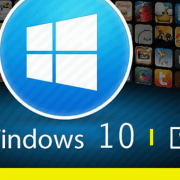Make-Believe Reality
Imagine that you’re in the middle of the desert. The dunes stretch forever in every direction. There, on the edge of your vision you see a shimmer. Every fiber in your being tingles with the hope that you might find a reprieve against this endless assault by nature. Alas, it’s not a mirage it’s Microsoft’s new augment reality device, the Miragetable. In Austin, Texas, Microsoft unveiled its latest invention. The Miragetable projects images onto a warped piece of plastic. Cameras adjust the depth of images based on the user’s gaze. The device allows people to share tabletop experiences like showing off sketches and models. It has a lot of problems like rendering and texture issues. But it’s another step into the world of augmented reality. These are technologies that help bridge the gap between the digital and real worlds. Actually, the term real world is rapidly eroding.
Why does reality even need augmenting? Of course it’s not needed. It could be argued that we spend too much time plugged into devices and isolated even in public places. However, on the other hand, it could give one an edge. Imagine you’re working to work and you’re wearing Google Glasses. Your friend texts you that an ice cream truck has broken down on Bolyston Street and the driver is giving away free ice cream rather than watching it melt. The glasses analyze the message and display pertinent information like a map to the said location. You say a few commands and the glasses access a network of other maps and public transportation schedules. That way you can get you free ice cream and get to work on time. Nice.
That’s what life is about, right? Maybe it isn’t. Maybe all this sharing, networking, and connectivity is bad for our health. But once it gives someone an advantage. Once it makes an IT consultant more efficient or a first responder a greater chance of saving a life, augmented reality will stick.

